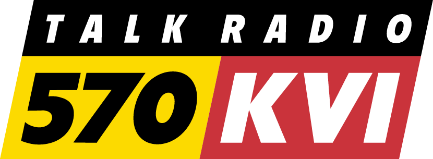(The Center Square) – Spokane City Council members have authorized a $950,000 allocation toward equipment purchases, labor, and related costs for maintenance of bicycle lanes in the community.
Of that amount, up to $550,000 is earmarked for equipment that will include a small, maneuverable Caterpillar front-loader tractor, a sweeper unit with a sander and snow blade, mower attachments, a pair of two-ton four-wheel-drive flatbed trucks, two dump trailers, and a flatbed trailer. The remaining $400,000 will go toward personnel costs for the public works/streets department.
The council approved the proposal in a 6-0 vote Monday.
“I’m very excited to support this, and glad this is finally coming up for a vote. I know we’ve been talking about it for a long time,” said Councilmember Zack Zappone, who wished it could have been adopted last summer to have in place now.
“That’s okay; we can have it next winter,” he said.
In its adoption resolution, the city said there is a “continued need to secure the safety of pedestrians and preservation of personal property by cleaning snow and debris from bike lanes.”
There was consensus agreement among council members about the need for the equipment and program, but views differed on its funding source: the city’s “traffic calming measures” fund. The program is funded via fines from red light and school speeding zone cameras.
Spokane’s TCM fund was started in 2010 using monies derived from tickets issued to motorists for photo red-light traffic and school speed-zone violations. Those revenues are earmarked to improve street safety, especially for pedestrians and bicyclists, through “self-enforcing” traffic management to reduce speed and volume of vehicles. Physical changes can include signage, traffic circles, and roadway narrowing while education, enforcement, and engineering are other components.
In this year’s budget, the council agreed to use some TCM revenues to fund a small police unit dedicated to neighborhood traffic enforcement. On Monday, councilman Jonathan Bingle said there had been “a lot of discussion” about that allocation. And while he felt the bike lane equipment “is going to be great,” Bingle felt there has been “an inconsistent stance” on how the TCM funds are used.
“We should be maintaining those spaces,” he said, “but I don’t know that these are the dollars we should be using on them.”
Fellow councilman Michael Cathcart, a member of the traffic calming committee, agreed with Bingle, and also felt that all future infrastructure projects should have 5-to-10% of the total project cost set aside for maintenance expenses.
“… when we invest in significant infrastructure projects, we have to show the community we are maintaining those and we care about those,” he said.
Zappone, in turn, felt the allocation of traffic calming funds toward bike lane maintenance was appropriate, saying the monies are intended “to make our streets more walkable, liveable, pedestrian and bike-friendly. We want to active our streets with people and bike lanes do that.”
Zappone also noted that nearly half of the money is going toward maintenance “for all traffic calming programs,” not just the bike lanes and related equipment.
While doorbelling last year during her campaign, newly elected council member Kitty Klitzke said she heard from residents who supported sweeping and shoveling to clear bike lanes because some of the neighborhoods in her district lack sidewalks, forcing pedestrians to walk in the street.
Councilmember Paul Dillon and Council President Betsy Wilkerson also voted in favor.
“I’ll just say we’re investing in infrastructure and maintenance across the board. That’s what’s been lacking … so I am in support of this,” said Wilkerson.
The initial program is expected to operate through 2025, with the council and public works assessing its effectiveness in sweeping, plowing, clearing vegetation, and repairs of multiple features including bike lanes, striping, signage, pedestrian refuge islands, curb extensions and median barriers.





